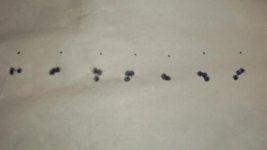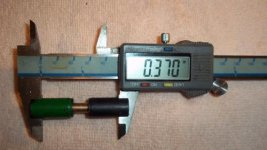4
4Mesh
Guest
But Mike,
I've done some pretty serious bullet measur'n in my day, and if there had been a variation in the ogives, It would have showed up like a sore thumb. It did not.
I only ever sorted bullets that came from the same lot. But even still the ogive's of similar bullets of different lot did not vary. I figure if the manufacturer already sorted these and said they are different, I don't need to go check. I never sorted a mix of Berger/Sierra/Nosler's. I stuck with just one brand, one weight, one lot. Now, maybe if you are buying bullets from a manufacturer that uses 100 sets of dies and throws all the bullets into one batch, then this type of sorting is needed. But, early on, I weeded out that sort of bullet maker and only shot bullets made by people with a half a brain or more.
If you are saying that two bullets from the same dies or intended-to-be-even similar dies, could have an ogive variation of 11 to 11.8, then I guess I'm done with this thread too. Come'on now, even you have to admit that's a bit of a stretch.
I've done some pretty serious bullet measur'n in my day, and if there had been a variation in the ogives, It would have showed up like a sore thumb. It did not.
I only ever sorted bullets that came from the same lot. But even still the ogive's of similar bullets of different lot did not vary. I figure if the manufacturer already sorted these and said they are different, I don't need to go check. I never sorted a mix of Berger/Sierra/Nosler's. I stuck with just one brand, one weight, one lot. Now, maybe if you are buying bullets from a manufacturer that uses 100 sets of dies and throws all the bullets into one batch, then this type of sorting is needed. But, early on, I weeded out that sort of bullet maker and only shot bullets made by people with a half a brain or more.
If you are saying that two bullets from the same dies or intended-to-be-even similar dies, could have an ogive variation of 11 to 11.8, then I guess I'm done with this thread too. Come'on now, even you have to admit that's a bit of a stretch.



